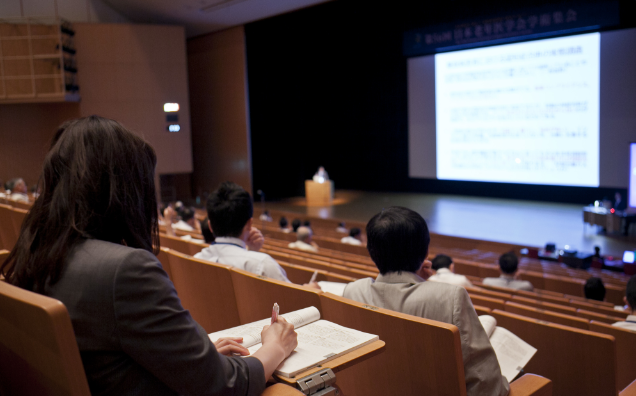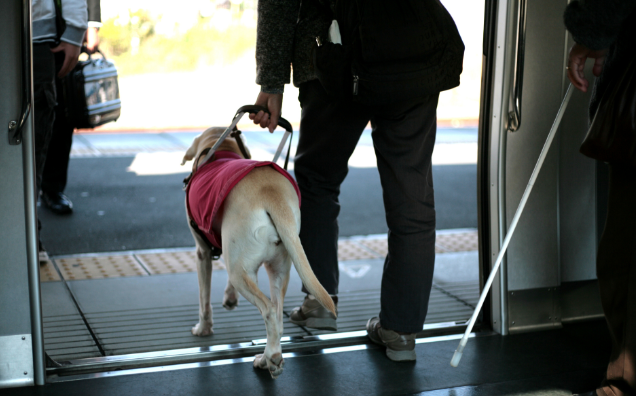- TOP >
- Efforts of Keio Plaza Hotel
Efforts of Keio Plaza Hotel 2-2-1 Nishi-Shinjuku, Shinjuku, Tokyo
We want to increase our guests' right to choose as well as their options
Achieving universal rooms born as a result of on-site communication
Keio Plaza Hotel was started in 1971 as Japan's first high-rise hotel. The hotel started pursuing barrier-free efforts in 1988. In December 2018, the hotel's 10 existing universal-design rooms were renovated and three new luxury-type rooms were built, for a total of 13 universal rooms. Regarding the specific efforts, we talked to Yoko Sugiura, the Planning and Public Relations, Sales Strategy Office as well as Saori Nakamura, the department of guest room.
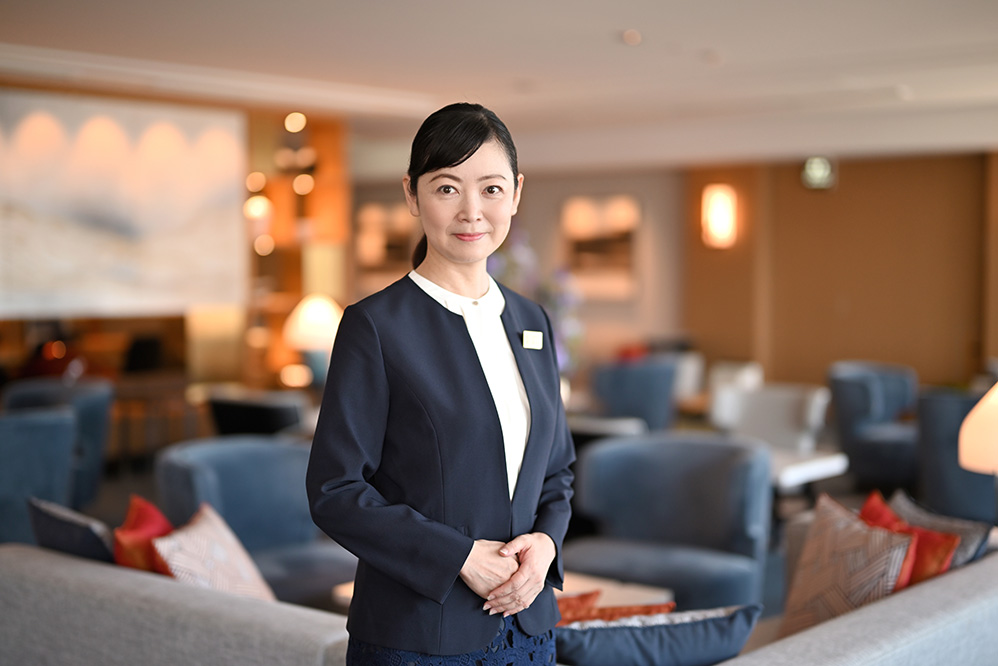
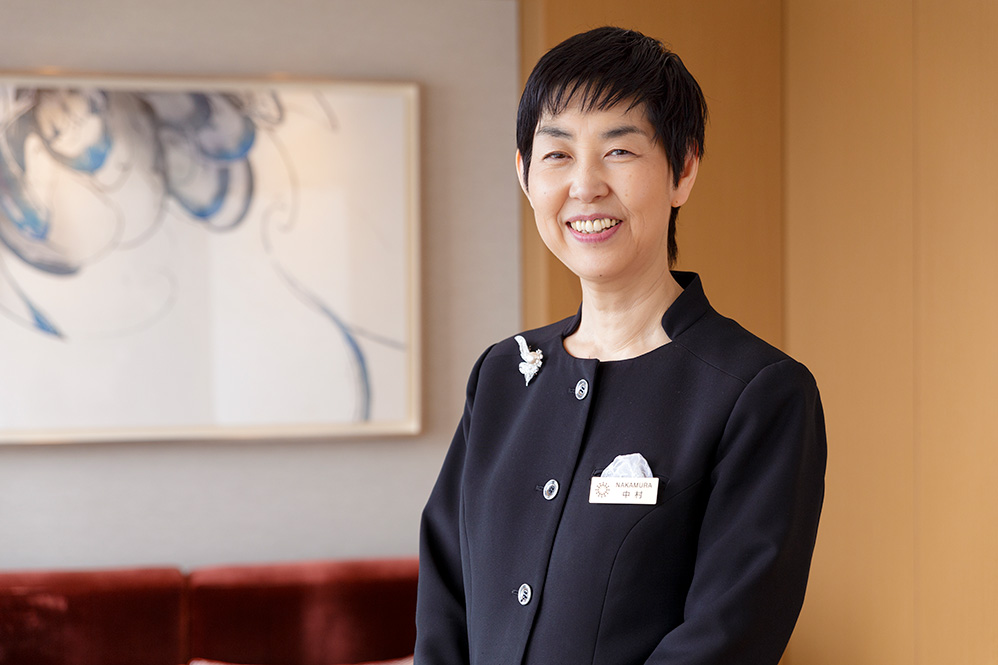
Accepting an international conference was the opportunity to take action
In 1988, the decision was made to accept the World Congress of Rehabilitation International to be held for the first time in Asia, and our efforts started as a result of our attempt to deal with that. At that time, we improved some of the 15 rooms in our facility to make them more accessible to wheelchair users. Back then, people still equated disabilities with wheelchairs, and one often actually saw wheelchair users, so we started out by focusing on resolving tangible issues, including restrooms and bathrooms -which are physiologically necessary for everyone- in particular. For our bathrooms, we replaced the existing 6-centimeter steps with custom-ordered slopes. In addition, we replaced the doors with doors that open outward to make entry easier. Based on today's standards, this probably doesn't sound like a big deal. However, at the time, there were no laws regarding switching to barrier-free buildings, it was really difficult to significantly improve rooms for the conference, and it was necessary to be committed to make any progress on such efforts. We started by giving our staff members the chance to experience what it is like to push and sit in wheelchairs so that they would have a better idea of how to treat our guests.
The World Congress of Rehabilitation International gave us a chance to collect opinions from guests as well as information necessary for our daily business. We decided that we should take advantage of this information to build rooms, so we obtained advice from an architectural firm that was insightful in terms of barrier-free design and then built 10 universal rooms in 2002.
In addition, we took highly motivated action in terms of not only disabled people but also how to go about handling babies and small children. For example, we devised plans that made it possible to stay at our hotel with babies and started providing high chairs, formula machines, and baby wipes.
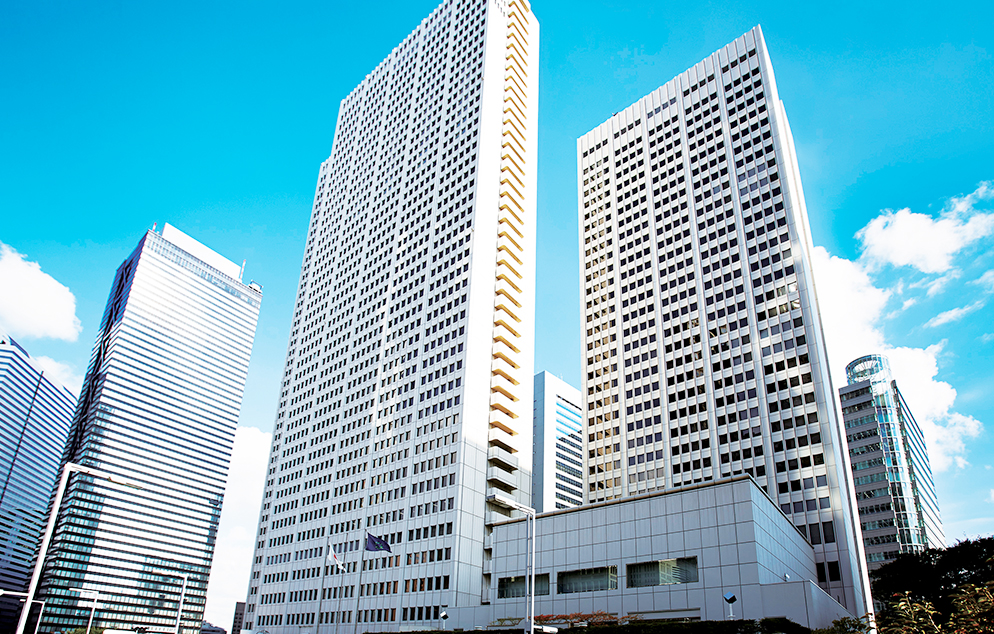
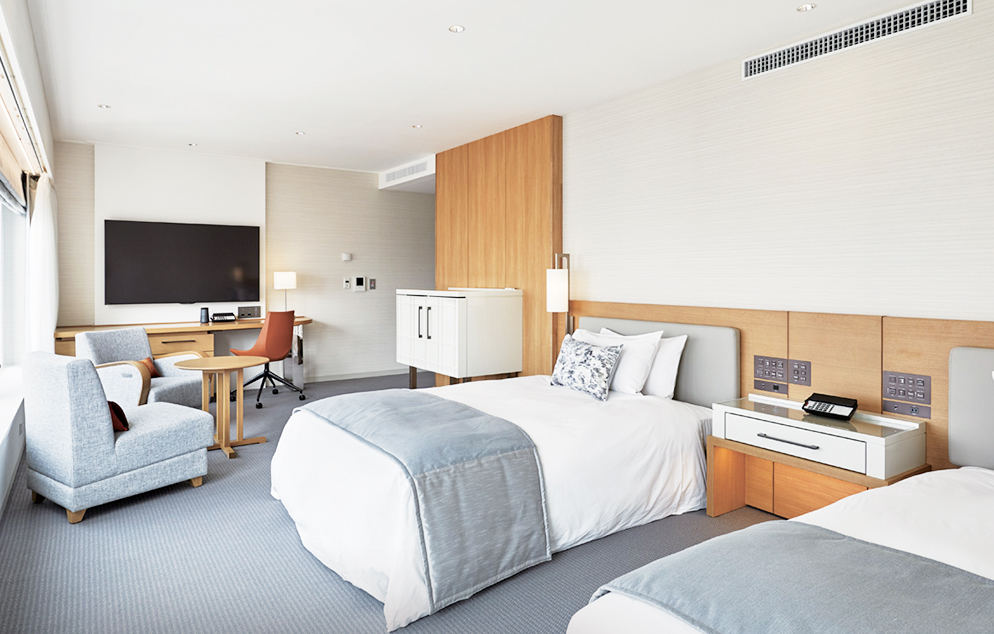 Luxury deluxe (universal design)
Luxury deluxe (universal design)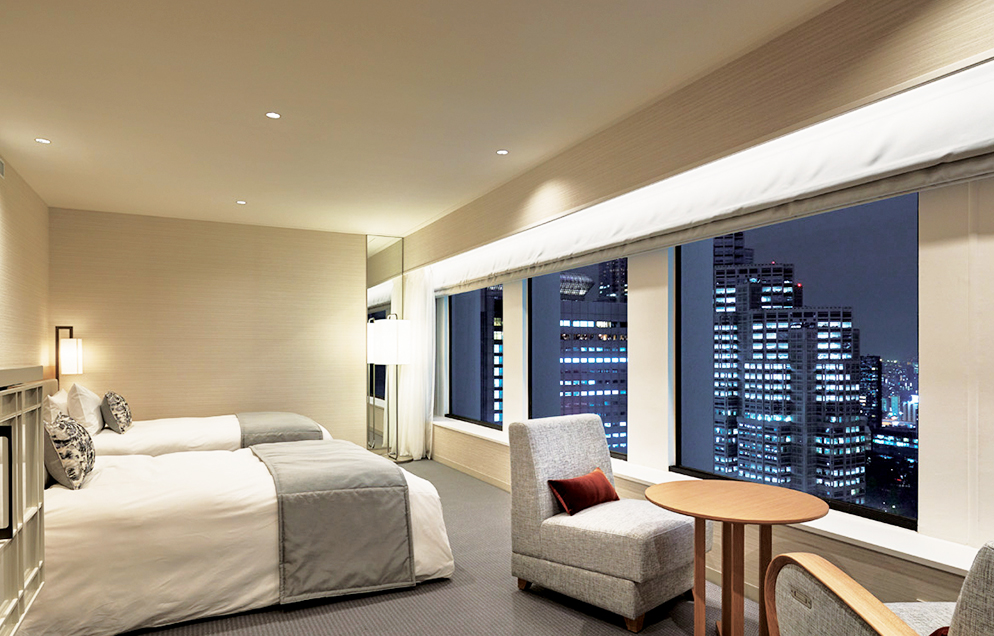 Luxury deluxe (universal design)
Luxury deluxe (universal design)
Additional renovations focused on plumbing
In 2018, we renovated our existing 10 rooms and built three new luxury-type rooms, for a total of 13 universal-design rooms.
At the time, we focused on plumbing in particular. During the initial renovations in 2002, it wasn't possible to renovate all the plumbing due to water-pipe considerations, but then we heard from our guests that our baths were hard to use, and we felt that we needed to make some overall plumbing improvements. Therefore, we obtained advice from consultants on how to make our facilities spacious enough for wheelchair access.
For our bathrooms, we set up slopes and ensured that the bathroom interiors were sufficiently spacious. We also set up washing places in our junior suite twin rooms, which are the largest ones we have. In addition, we improved the bathtub faucets to make them easier for persons with disabilities of the hands to use. In our restrooms, the handrails and backrests are detachable, and it is also possible to install backrest cushions. Guests with spinal injuries -who have their own backrest cushions- have expressed their delight about this.
In addition, we made our elevator signs easier for visually impaired guests to identify, switched to higher contrast carpets, started using guest-room number plates that don't hurt your hand when touched, and made various other improvements.
Interacting with guests to prepare rooms in line with their needs
We offer "Universal Design Rooms" rather than "Barrier-Free Rooms". Rather than directing customers to specific rooms that are barrier-free, we provide equipment that can be attached or detached to suit their physical condition if necessary as part of our regular sales process. For example, the handrails in the restrooms are removable, and electric armchairs and other equipment are usually designed so that the outlets can be stored, so that there is no sense of discomfort during normal use. We have been using the detachable type since 2002, and we place importance on adjusting to the customer's needs and preparing a room that suits the customer's needs. This allows us to be flexible by attaching and detaching equipment without creating a fixed specific room, so that we can offer this service to everyone as a matter of course and without any hindrance to sales.
Many people with some kind of disability, such as wheelchair users or people who use canes, use our Universal Design Rooms, and many of them are repeat customers. Until now, most of the attention has been focused on people with various disabilities, such as physical disabilities, hearing, visual, mental, intellectual, and internal disabilities, etc. However, we would like to remove as many barriers as possible for our diverse customers, including the elderly, people with small children, people with allergies, and foreigners who feel differences in language, religion, culture, and national customs. We would like to remove any barriers that our customers may feel, and provide services that are close to their hearts.
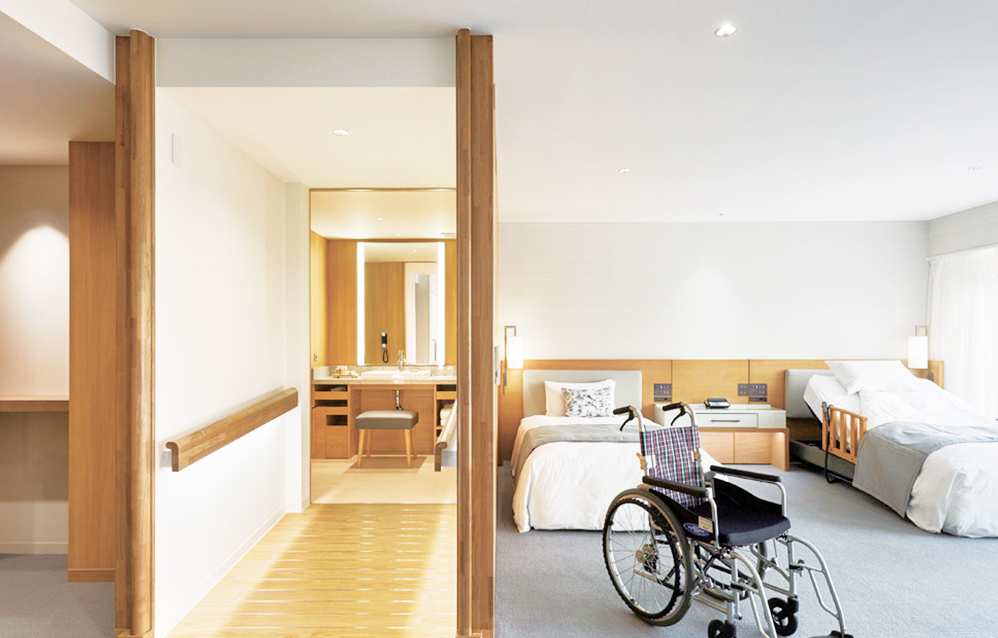 Junior suite (universal design)
Junior suite (universal design)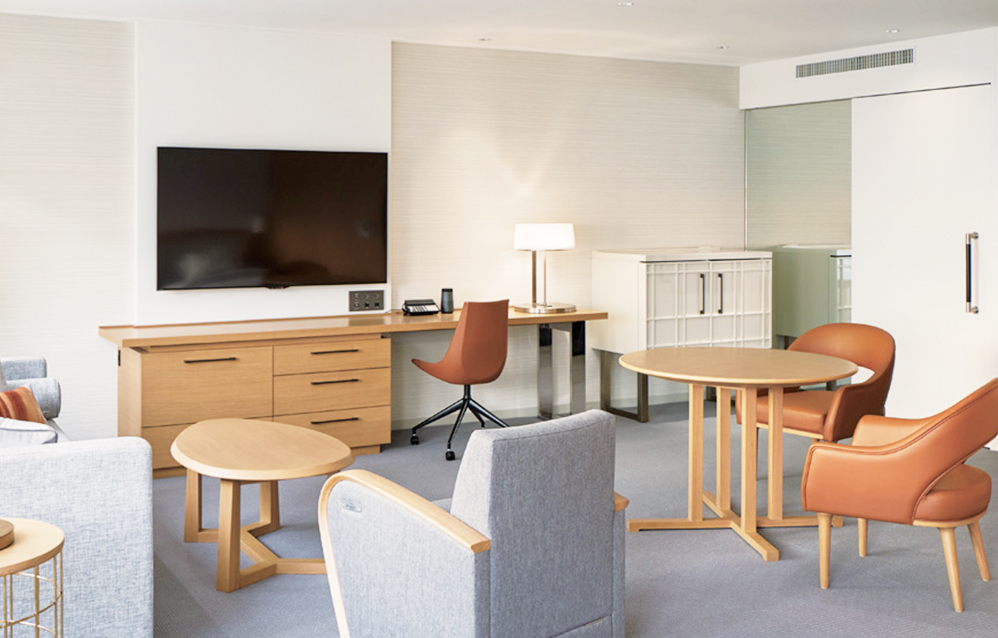 Junior suite (universal design)
Junior suite (universal design)
 social media accounts
social media accounts
Tokyo, a city that is accessible everywhere to anyone.
Sightseeing where you wish, as you wish.
This ability to travel anywhere you please makes life that much richer.
Tokyo welcomes your visit.
Here you can encounter tradition,
history, culture, nature, technology,
and, best of all, smiling faces.
Making tourism closer and more
enjoyable through accessible tourism.



